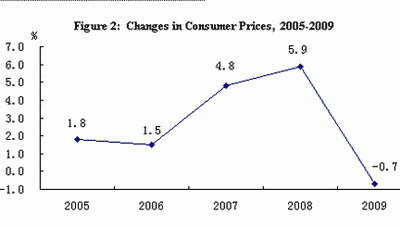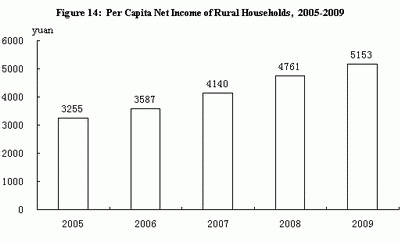Did Housing Prices Really Only Rise by 1.5% in 2009?

According to an official communique released by the National Bureau of Statistics (NBS) last week, the price of housing in seventy of China's large- and medium-sized cities increased by an average of 1.5% over the course of last year.
According to The Statistical Communique of the People's Republic of China on the 2009 National Economic and Social Development, which was released on February 25, the prices of newly-constructed apartments rose by 1.3 percent during the course of 2009, while the price of second-hand apartments increased by 2.4 percent. Over the same period, rental prices declined by 1.5 percent.
However, according to Yu Bin, Director of the Macro Economy Research Department of the Development Research Center under the State Council, in the period from January to November 2009, the average price of housing had shot up to 4,600 yuan per square meter, a 1,000 yuan increase on the average price of housing in 2008.
The unexpectedly low rate of growth reported in the communique has also aroused doubt in the broader community. Comments on online forums express the view that many feel the officially released figures underestimate the rate of growth, with some even joking that "it's obvious that they misplaced the decimal point!"
Though sometimes criticized by domestic media for lacking specific data and a lack of scientific method in the way the data is gathered, the communique on economic and social development still serves a useful general indicator of the current state of the Chinese economy.
The communique, which outlines the economic and social developments that took place in China over the previous year, was first published in 1978 and has since been produced on an annual basis, normally published in the first quarter of every year.
The communique for 2009 is divided into twelve chapters that range from a general overview of the major economic indicators such as annual GDP growth, to broad-brush outlines of developments in agriculture, industry and construction, investment and trade. The report also includes a general outline of economic developments in areas such as culture, public health and sports.
Aside from the statistics related to the rate at which housing prices are increasing, other data contained in the report has also met with doubts. Many feel confused by the fact that despite food prices rising by 0.7% over 2009, the residential consumer price index registered a drop of 0.7% over the whole year.
The communique also raiseD long-standing questions about the accuracy of China's unemployment statistics. Critics of the current method have long pointed to the inability of the current index, which simply measures the percentage of registered unemployed people in China's cities and towns - reported in the communique as having gone up by 0.1 percent over the course of 2009 to 4.3 percent - to reveal anything meaningful about the level of unemployment in the country at large.
They?argue that by focusing on the registered unemployed, the current index does not measure the sizable proportion of unemployed who do not register.
The central government is reported to be considering the adoption of a new method to measure the rate of unemployment in cities and towns.
Aside from the more controversial aspects of the statistical report, the communique also revealed that up until the end of last year, China's foreign reserve had reached 2.3992 trillion US dollars, 453.1 billion more than at the end of 2008.
The exchange rate between the RMB and US dollar at the end of last year stood at 1 US dollar: 6.8282 yuan, appreciating by 0.1% on the level of the previous year. 
Links and Sources
National Bureau of Statistics: Statistical Communiqué of the People's Republic of China on the 2009 National Economic and Social Development (English) and (Chinese)
The Beijing Morning Post: Decimal Point in Wrong Place? (Chinese)
China News: Criticism of Unemployment Index (Chinese)
The views posted here belong to the commentor, and are not representative of the Economic Observer |




















